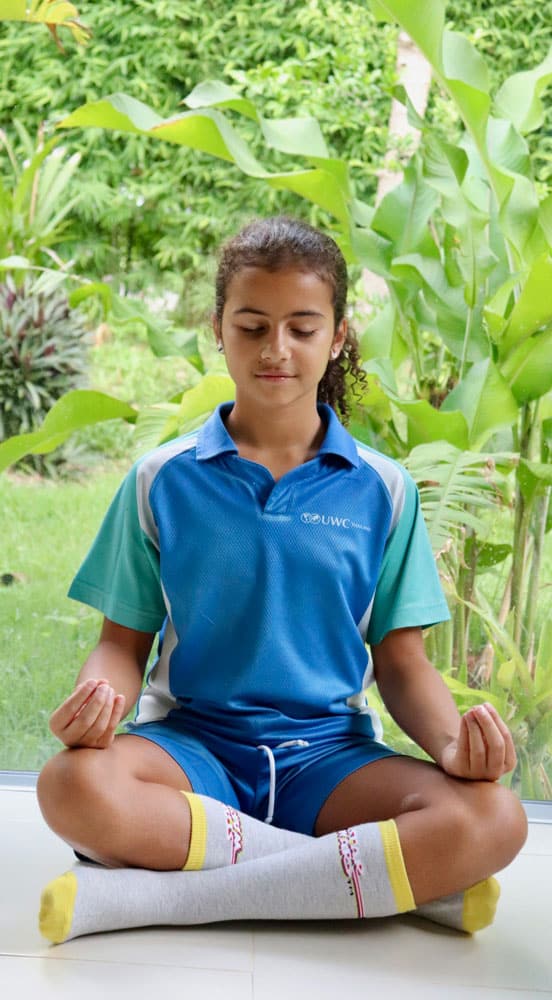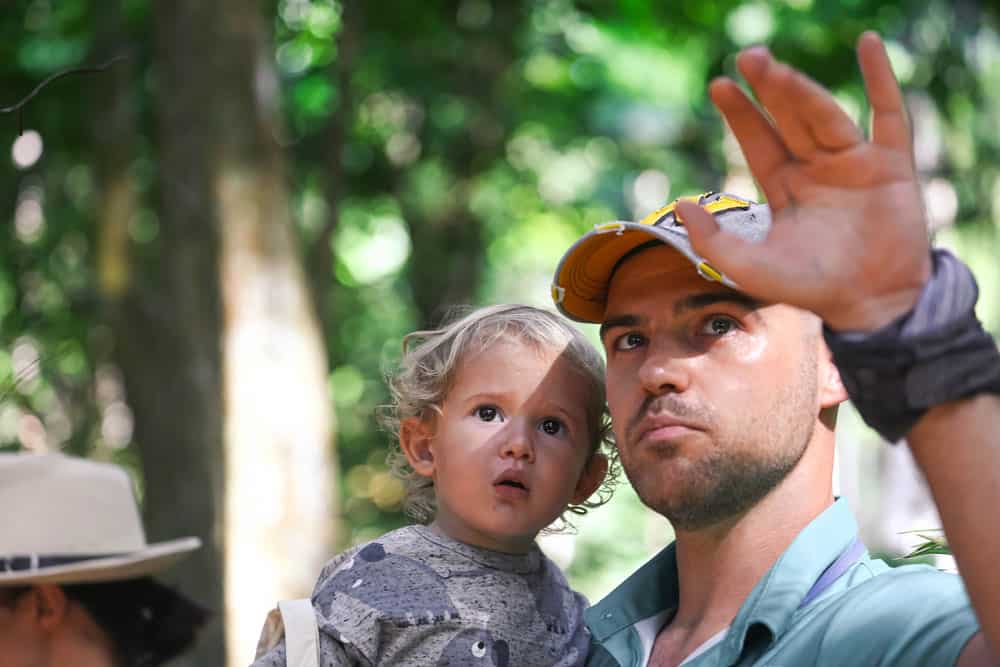Online learning is challenging, not only for students but for their parents and teachers too. With many schools and families now learning online, it may feel difficult—if not impossible—to ensure that students maintain a good balance of activities and learning without being constantly glued to screens.
In addition to creating structure to the day so that students are able to stay engaged and can maintain a routine, here are five ways that UWC Thailand helps students maintain balance while learning from home.
1. Practice Mindfulness Daily

Encouraging children to take pauses to check in with themselves throughout the day works best as part of a family or school culture of mindfulness. Stopping as a family to practice together at a designated time each day can be really helpful. This gives you the opportunity to check in with your thoughts, emotions, and body and to discuss everyone’s needs as a family. Connecting to things that you all appreciate and are grateful for can also boost your mood each day and can be a welcome addition to your routine. Looking for a place to start a personal or family mindfulness practice? Visit UWC Thailand’s free mindfulness resources page for guided audios and activities.
2. Seek Out Sustainable Options and Service Opportunities
As a school, UWC Thailand focuses on hands-on service, but in changing times we have to look at alternative ways to support our local and global communities.
With more time at home comes more takeaway meals and midnight shops online for things that we really can do without. What is the environmental impact of all those orders? Think just about the packaging involved, then add on the wider carbon footprint. Consider giving your business to local restaurants, markets, and companies that use biodegradable or easily recycled packaging.
While face-to-face volunteering may not be possible during lockdown or social distancing, there are still a number of ways to help. Many organizations need assistance with writing, online translation, and developing social media advocacy campaigns. Of course, a nominal donation from the money saved from not going to the cinema will also be welcome! If it’s time for a spring clean, consider donating toys and clothes that haven’t been used over the last few months to local organizations.
3. Turn Daily Activities into Learning Opportunities
Learning doesn’t begin and end with “school”. Here are some ideas of how you may transform daily activities into natural learning opportunities:
- Conversations at home about health, nutrition, exercise, wellbeing, hygiene help children learn about their bodies. Consider working as a family to create healthy meal plans, tracking daily exercise, plant a garden, and learn what the plants need to grow.
- Daily conversations at home (in any language!), reading together, writing in journals together, and discussing information that you come across to determine its reliability or accuracy is a great way to encourage your children to be critical thinkers and users of language. Symbolic language is also important—mathematical numbers and symbols surround us in everyday life. Why not bake together and discuss what the measurements mean? Placing your grocery order? Have your child help; adding up the costs of items, sticking to a budget, etc.
- Having children engage in chores around the house is a great starting point for conversations about work and income. Build or make something together to develop a sense of production and craftsmanship rather than just consumption. The more we can have children ‘hands-on’, the more ‘heads on’ and ‘hearts on’ they will be as well.
- Dance, music, painting, sculpture, and architecture are languages understood around the world. Listen to music together and talk about the meaning behind the lyrics, or how the instruments make you feel. Go on a virtual tour of many of the world’s museums and discuss the artwork, then try to recreate it at home with materials you have available.
4. Get Outside

As we spend more time indoors than many of us have done before, now more than ever, it is important to take deliberate action to step outside and allow ourselves to be in a ‘green space’. There is a catalogue of evidence that spending time in nature (even small green spaces) can positively affect our mood and psychological well being. While that may be limited to our gardens and local neighbourhoods, it may surprise you how much there is to explore. How much do you know about the wildlife outside your front door?
Taking time to walk in these green spaces regularly, either individually or as a family, can help us create a sustainable routine that allows us to get our bodies moving and experience gratitude for nature.
There are also a number of activities available and wilderness skills to develop while we continue with home learning. Some of the tasks our students have been working on in recent weeks have been focused on knotwork, compass building, water filter making, and nature journaling. There are a number of online tutorials that you can follow, as well as the video series Kru Rob, UWC Thailand’s Outdoor Education Teacher, has on his Youtube channel.
5. Take a Brain Break
In addition to the necessity of daily activity, brain breaks are energizing bursts of activity that boost blood flow, send oxygen to the brain, and help us retain information.
To facilitate brain breaks at home before the lock-down began, UWC Thailand’s primary school students decided on a sporting item like a tennis ball, skipping rope, or badminton racket to play with at home, periodically throughout the day.
By now, it’s you who has been staring at a screen, likely for much longer than just to read this article, so why not try a brain break yourself? A dozen push-ups and jumping jacks? A quick walk? 10 minutes of yoga? Afterward, when you return to your device, take a moment to reflect on how your capacity to concentrate has changed.
